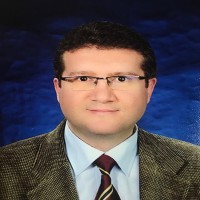Journal Boards
Editor-in-Chief
Co-Editors


Section Editor



Caner Ozdemir received the B.S.E.E. degree in 1992 from the Middle East Technical University, Ankara, Turkey, and the M.S.E. and Ph. D. degrees in Electrical & Computer Engineering from the University of Texas at Austin in 1995 and 1998, respectively.
From 1992 to 1993, he worked as a project engineer at the Electronic Warfare Programs Directorate of ASELSAN Electronic Industries Inc., Ankara, Turkey. From 1998 to 2000, he worked as a research scientist at Electronic & Avionics Systems (ASTG) group of AlliedSignal Inc., Columbia, Maryland. He joined the faculty of Mersin University in 2000 and is currently a professor in the department of Electrical-Electronics Engineering, Mersin, Turkey. He has been serving as a consultant to the Marmara Research Center of the Scientific and Research Council (TUBITAK) of Turkey and many defense industry firms. Dr. Ozdemir’s research interests are radar cross section, radar image/signal processing, inverse synthetic aperture radar (ISAR), radar cross section, ground penetrating radar, through-the-wall imaging radar and antenna design. He has published more than 180 journal articles and conference/symposium papers on these subjects.
Dr. Ozdemir is a recipient of URSI EMT-S Young Scientist Award in the 2004 International Symposium on Electromagnetic Theory in Pisa, Italy and also recipient of a JARS best paper award for photo-optical instrumentation published in the Journal of Applied Remote Sensing in 2016. He is the author of the book titled “Inverse Synthetic Aperture Radar Imaging with Matlab Algorithms”.

Aktif araştırma alanları; Coğrafi Bilgi Sistemi (CBS) ve Uzaktan Algılama (UA) tekniklerini kullanarak yeraltı sularının kirlenmeye karşı hassasiyetinin değerlendirilmesi, yeraltı suyu potansiyelinin değerlendirilmesi, yer seçimi (deponi alanı), çeşitli coğrafi unsurlara ait morfometrik özelliklerinin belirlenmesi, arazi kullanımına ait zamansal değişimlerin haritalanması, yüzey sıcaklığı ve bitki örtüsü haritalama uygulamaları gibi konuları içermektedir.




 Web
Web


nanometarial, silica aerogel, carbon nanotube, graphene, high entropy alloy


